Tom's Hardware Verdict
Keychron released a successful gasket mount board in the Q1 earlier this year, and while it was great, the company didn’t grow complacent. The Keychron Q2 comes with quiet sound, screw-in stabilizers, a well-constructed gasket mount design and a highly configurable rotary knob.
Pros
- +
+ Gasket mount design
- +
+ Durable
- +
+ Rotary knob
- +
+ Screw-in stabilizers
- +
+ QMK/VIA support
Cons
- -
Terrible keycaps
- -
Expensive
- -
No per-key RGB in software
Why you can trust Tom's Hardware
The custom mechanical keyboard market has been growing like a weed, thanks in part to ASMR TikTok videos of people typing. However, many of those mechanical planks are extremely expensive and heavily modded, making them hard to obtain for the average consumer. But Keychron has been able to keep up with the trend and create another fantastic gasket mount mechanical keyboard, the Q2. This board ditches the Q1’s 75% form factor and is instead a 65 percent board. It’s also a touch more expensive than its predecessor, priced at $179 instead of $169.
Keychron Q2 Specs
| Switches | Gateron G Pro Brown |
| Lighting | Non-addressable |
| Onboard Storage | 5 profiles |
| Media Keys | Rotary knob or configurable |
| Connectivity | USB Type-C |
| Cable | 6 feet. braided |
| Additional Ports | None |
| Keycaps | Doubleshot PBT |
| Software | QMK, VIA |
| Dimensions (LxWxH) | 327.5 x 121 x 33.8mm |
| Weight | 3.6 pounds |
Design for the Keychron Q2
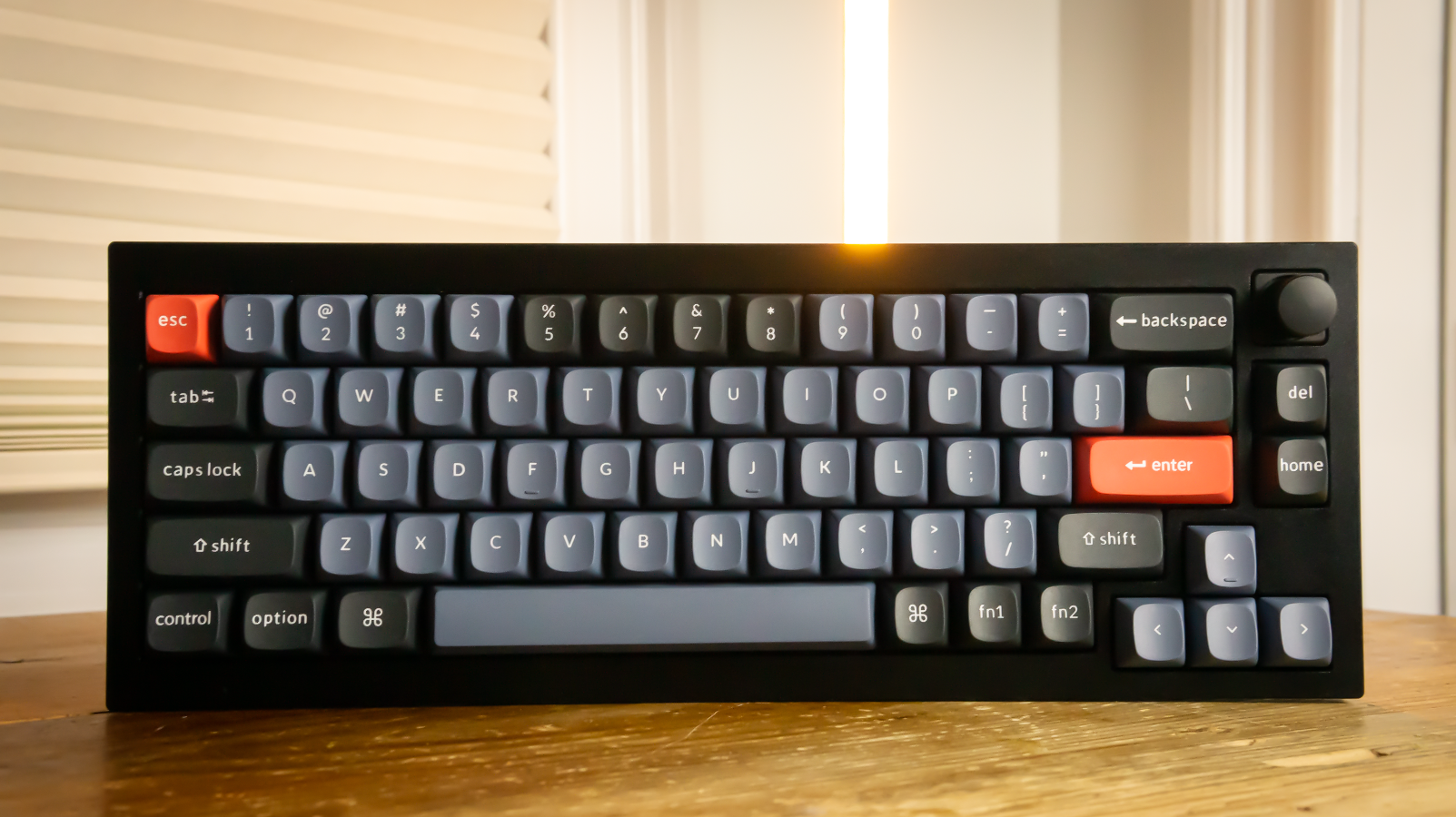
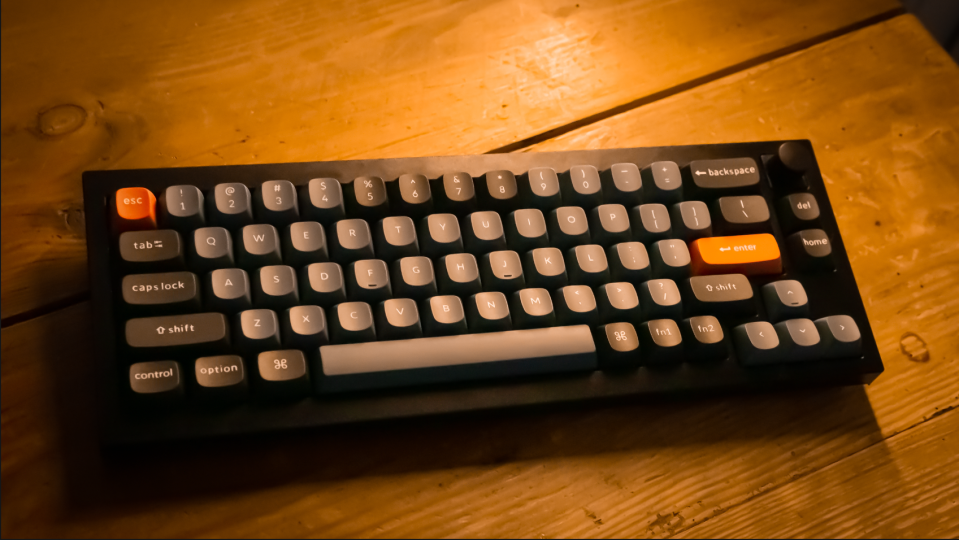
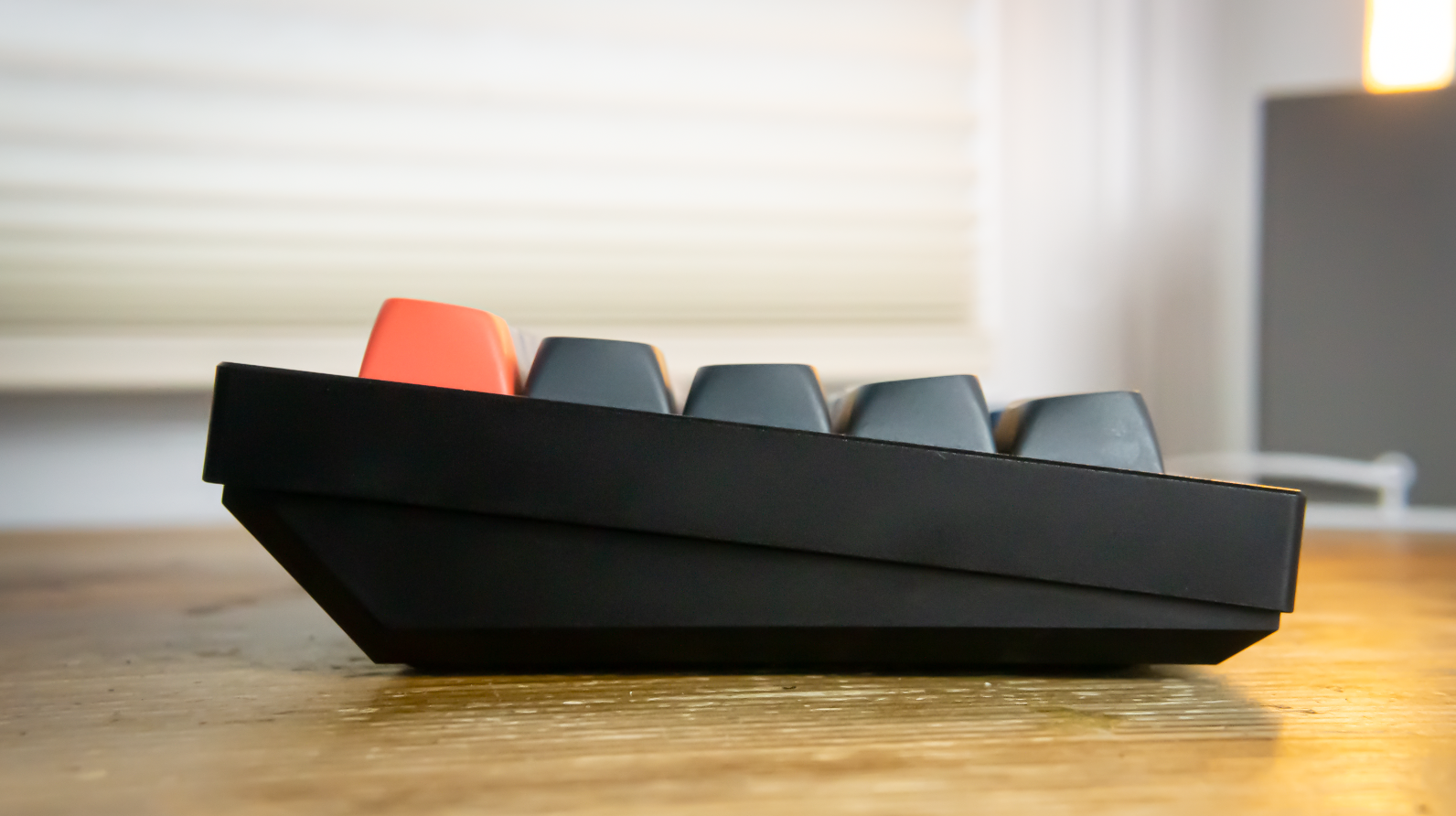
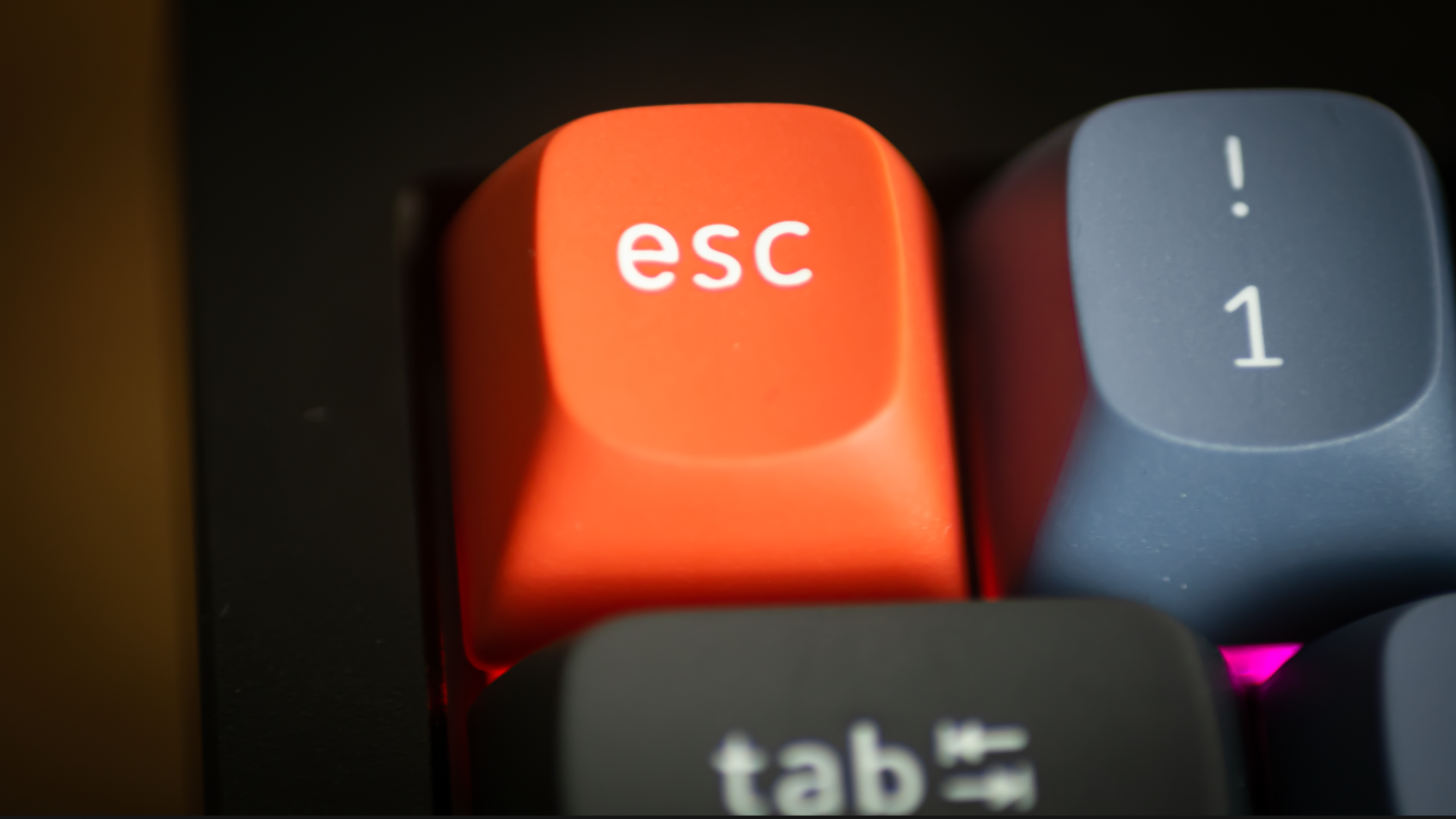
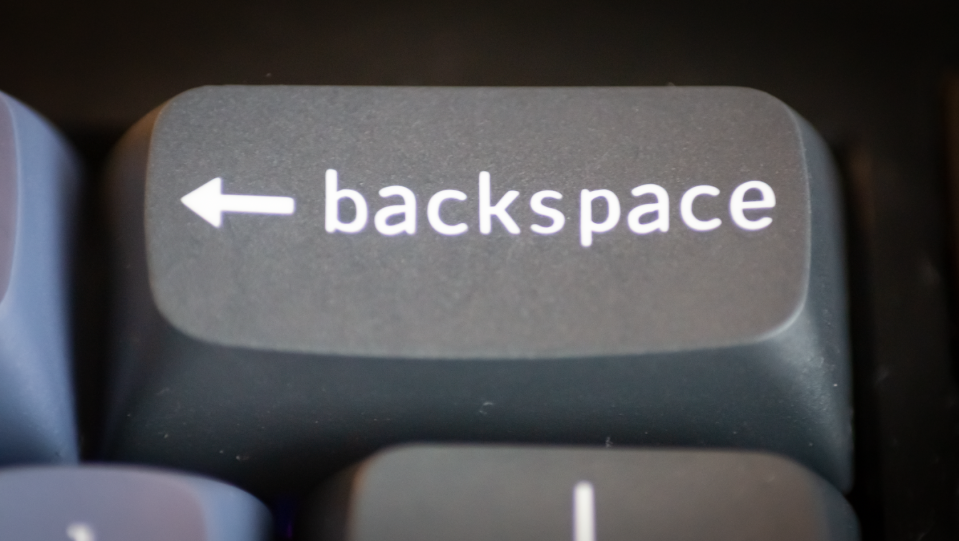
The Keychron Q2 is a 65 percent, gasket mount mechanical keyboard that comes with an aluminum chassis, sound-dampening foam, screw-in stabilizers, double-shot PBT keycaps, a rotary encoder, hot-swap PCB, adjustable RGB, Windows and Mac support and QMK/VIA software support.
This is Keychron’s second gasket mount mechanical board, the first being the Q1. I was overall very impressed with the Q1, and the issues I had with it (like sound and weight) were overshadowed by the great typing experience I had on the finished product.
This time around, Keychron is utilizing a double gasket design, which means that the board has normal pads on the top and bottom of the switch plate, but also has silicone pads on the backplate.
While Keychron never mentioned what material it used for the Q1’s gaskets, the Q2 features poron foam pads, which feel more appropriate for a gasket mount board. Poron foam is used on higher-end gasket mount boards like the KBD67 Lite R3, since it compresses and expands easier, thus providing a bouncier feel.
As stated earlier, the Q2 has silicone pads between the top and the back of the case, and even though this doesn’t affect the typing feel, it definitely did reduce any clanking sounds from the aluminum switch plate.
When I heard that Keychron was including double shot PBT keycaps with the Q2, I was really excited, because this type of keycap is usually more durable than dye-sub and the printing on its legends tends to be clearer. But to my fingers at least, the Q2’s keycaps are terrible. They are plenty thick, but calling these double shot PBT should embarrass Keychron, because they’re that bad.
The issue is with unexpected shine though and lots of flex. When I enable RGB on the Q2, I can clearly see the light shining through the escape key, which is actually making me laugh as I write this, because these aren’t supposed to be transparent keycaps. It’s odd, because the keycaps aren’t thin, but the half-baked double-shot process makes the keycaps look unfinished. Fortunately, there wasn’t any warping. But the spacebar is extremely flexible; there aren’t any lattice marks underneath the spacebar keycap to provide structure.
On the top right of the board is a notched rotary knob, which makes me happy because I love being able to adjust my rig’s volume with a wheel. There’s something about the rotary knob that bothers me, though. Unlike on the GMMK Pro, there’s a square cut-out around it, which looks very strange. I understand that if you wanted to, you could desolder the rotary encoder and fit a switch and a standard key in that cut out instead. But at that point, just get the knob-less version (which has the insert key in that spot) instead.
Like almost all mechanical keyboards now, this board connects via USB-C. But unlike on the Q1, the Q2 doesn’t include a coiled aviator cable, to reduce cost. Between you and me, this was a good call because the quality of the Q1’s aviator cable wasn’t great. Its outer edges were frayed, like a sweater.
Moving on. Next to the USB-C connector is the Windows or Mac selector switch, and it’s got some wiggle to it, but unless you mess with it (or frequently switch between systems with differing operating systems) then you probably won’t even notice it.
Just like on the Q1, this board's shell is composed of CNC milled aluminum and it is very heavy, weighing in at 3.6 pounds. One of the biggest issues I encountered with the Q1 was its finish, especially on the switch plate. It would get scratched every time I took switches out. Thankfully, this issue didn’t occur when replacing the switches on the Q2, so kudos to Keychron on improving there.
One of my favorite things about the Q1 was its stabilizers. Not only were they screw-in, they were good screw-in, unlike Glorious’ GOAT stabilizers, which had issues rebounding and rattled like a child's toy when I tested them late last year. The stabilizers on the Q2 are even better than before; the wires click right into place and by default had less rattle than the Q1’s stabilizers did.
Another favorite feature of mine is the Q2’s VIA and QMK support. VIA is by far my favorite keyboard software, because even though it has a ton of features (more on that later), it is extremely easy to use.
Typing Experience on the Keychron Q2
Right out of the box, I noticed that the Q2 had much more flex than the Q1 did, which I believe is caused by the poron gaskets. Unfortunately, the model I received came with Gateron G Pro Brown switches, which are said to have less wobble than standard Gateron switches. To me, they just felt like boring Brown switches. Luckily, you can also get this board with Gateron G Pro Red or Pro Blue switches instead, plus it’s hot swappable.
I talked about how much I loathed the Q2’s keycaps earlier, but their OEM spherical angled (OSA) shape felt pretty nice to type on– they were a bit taller than the usual cherry profile I use, but not too tall where I felt like I had to relearn how to type. The rounded indent on the caps themselves felt really nice on my fingertips, too. Resting my fingers on the caps made it feel like they were molded to my fingers. Overall, the shape is great, but Keychron has to improve its structure for its caps.
My MonkeyType score with the Gateron G Pro Brown switches and OSA keycaps was what I had expected with a different keycap shape than my usual– 87 WPM, which is a tad slower than normal.
When I reviewed the Q1, I complained that it sounded relatively hollow, especially for a gasket mount board. Fortunately, Keychron listened and the Q2 doesn’t sound hollow at all.
Overall, I’m really impressed by how the Q2 performs out of the box; the stabilizers have been improved a satisfying amount. The amount of flex, especially with its aluminum plate, is exceptional and despite their quality issues, the keycaps contour nicely to my fingers.
Gaming Experience on the Keychron Q2
Our Best Gaming Keyboards list doesn’t have a lot of 65% keyboards on it, and while gaming keyboards this small definitely exist, they’re maybe not the best pick if you want a single board for every genre. The Q2’s not marketed for gaming, but since it uses a 65% layout, keep that in mind when shopping.
Thanks to my love for Square Enix’s Guardians of the Galaxy, I installed the Final Fantasy VII Remake to test this board with. To be honest, the 65 percent layout of the board did not bode well with this type of game. When it comes to a game like Final Fantasy, I never feel comfortable with anything smaller than a full-size board. Final Fantasy games are very tactical, which means that you need to be strategic, so the more keys the better.
Ultimately, while I was able to play, performing specific actions almost felt foreign without a numpad. Granted, games like Final Fantasy are often made with a controller-first mentality, which might explain some of the difficulty I encountered using a keyboard. Still, the more buttons, the more options.
This isn’t Keychron’s fault; this board isn’t marketed as a gaming keyboard, nor does it have dedicated macro keys or a polling rate faster than sound. Just know that, if you plan to use it as a stealth gaming board, the size and keycount presents limitations.
Software for the Keychron Q2
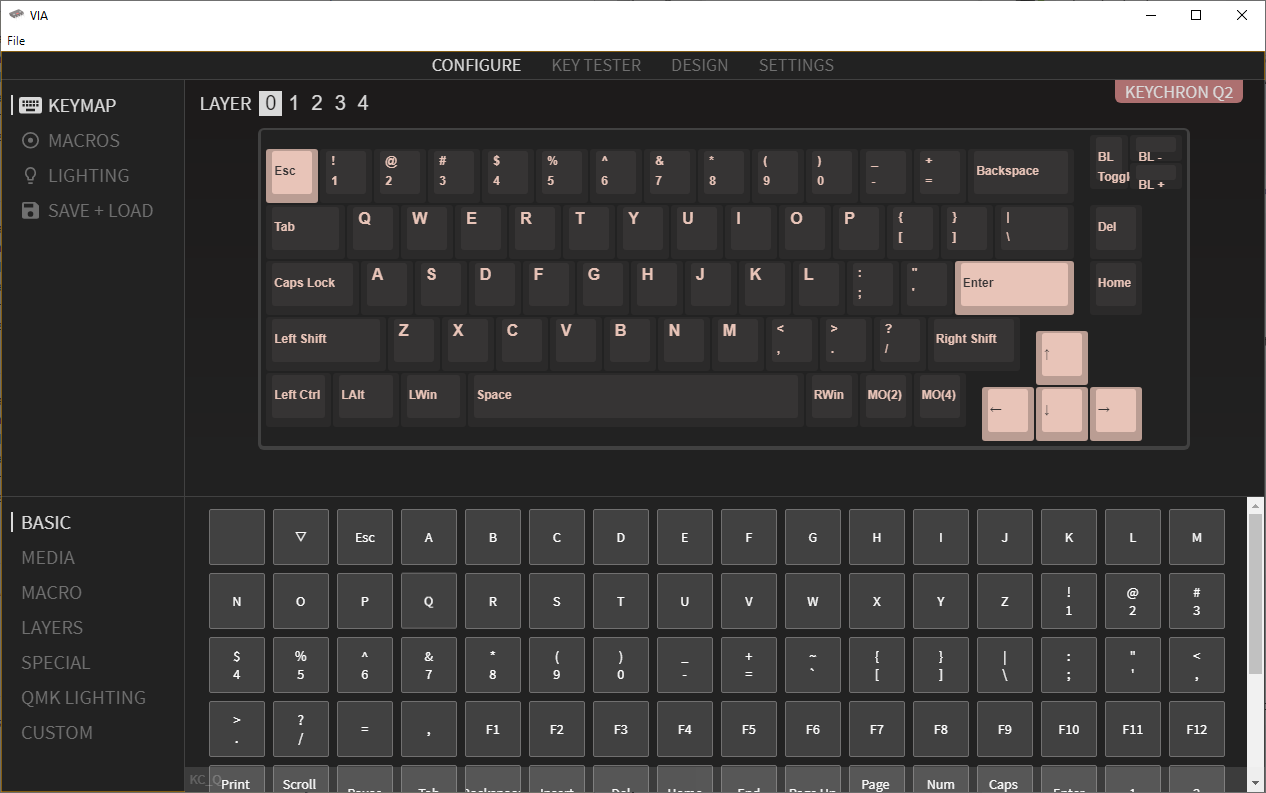
In my review for the Q1, I praised it for having VIA and QMK support. But, what is this software? VIA and QMK are open-source software solutions that support hundreds of features, and with how big the mechanical keyboard community is, more and more features are constantly being added.
The microcontroller the Q2 uses is the same one as the Q1’s, which has 32KB of memory, allowing you to store up to five profiles on it.
I tend to stay away from QMK, because not only is it outdated, it requires coding, and all of my coding skills went out the window after I graduated college. However, VIA is as easy to use as any good mechanical keyboard software.
Easily my favorite feature about VIA is its key tester feature, which is a blessing when I get new switches. Key tester is simple: All it does is highlight which key you press on the board, signaling that the switches work.
Thanks to Keychron’s engineering abilities, I was able to configure the rotary knob to do more than just adjust my speaker’s volume. For testing, I made the rotary knob into an RGB controller. When you press the knob, it toggles the RGB on or off, and turning the knob left lowers the brightness while turning it to the right increases the brightness.
Ironically, given their in-depth customization options, neither QMK or VIA have a per-key RGB feature. This didn’t bother me, because I tend to disable RGB, but with feature-heavy software like this, the lack of per-key RGB is like having a watch that keeps track of your steps and watches your stocks but doesn’t display the time.
Bottom Line

Overall, I was extremely impressed by the quality of the Q1, and despite some flaws, I love that board and I still use it from time to time. After testing the Q2 for some time, I was able to come to the conclusion that this board is brilliant and despite its smaller size, it comes with big upgrades.
That said, even though it’s one of the nicest boards that I have reviewed to this point, the keycaps are easily the worst I’ve seen on anything approaching this price, and the square cut out for the rotary knob is a bit of an eyesore. With that said, this is still a sturdy, versatile and good-performing mechanical keyboard.

Myles Goldman is a freelance writer for Tom's Hardware US. He reviews keyboards and cases.